Today's Tray a Day investigation is a fun waterproofing activity. The idea is to colour in each dinosaur and cover them with different test materials. Once each dinosaur is completely covered spray with water and uncover to see which dinosaur is the driest!
Materials which do not absorb water are said to be waterproof. An umbrella made from paper, or pan made from chocolate wouldn't be very helpful so it's handy to know the properties of materials when making something new.
If you like this investigation you might also like our other properties of materials experiments and activities.
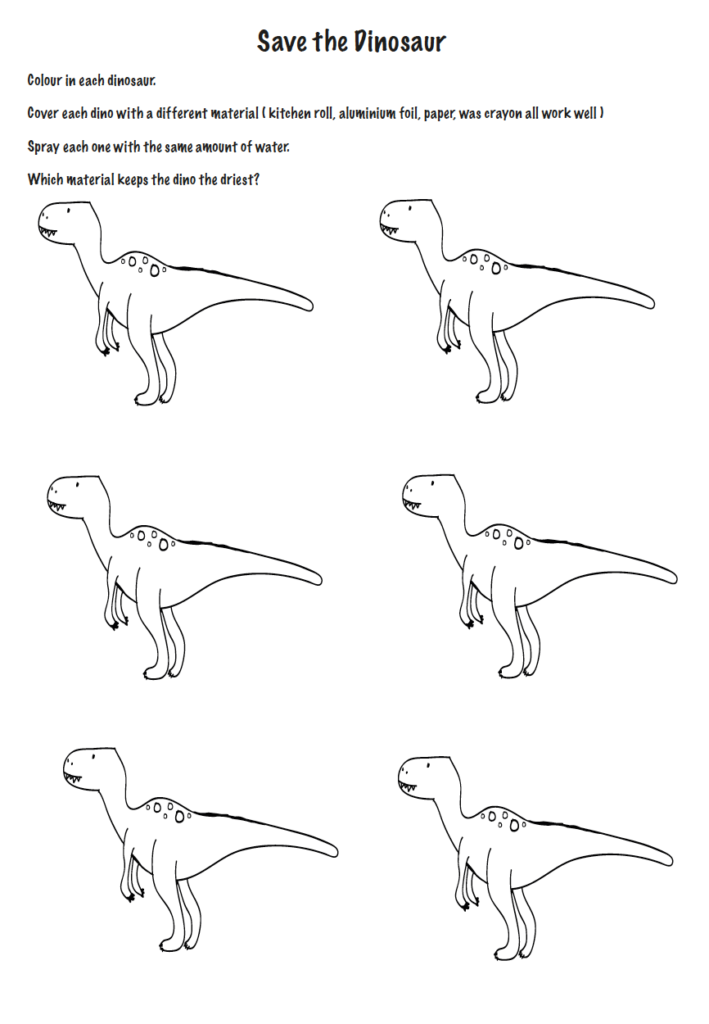
What you need
Water sprayer - or you can just drop water onto each dinosaur.
Different materials to test - kitchen roll, paper, card, kitchen foil, parchment paper, wax crayon all work well.
Masking tape or blue tac
Scissors
Dinosaur printable - or draw your own pictures
Felt tip pens
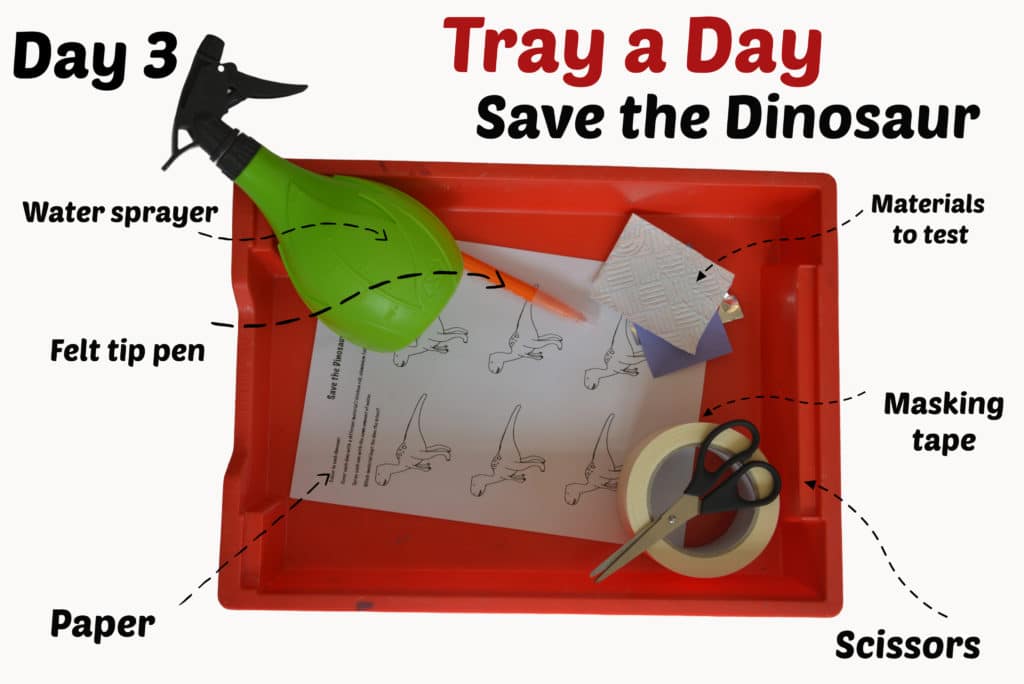
Instructions
First colour in the dinosaurs using felt tips.
Next ask an adult to help you cut out small rectangles of different materials to put over the dinosaurs. You need one for each dinosaur. Try to choose some materials you know are waterproof, some you know are not and some you're not sure about.
Carefully tape the rectangles over each dinosaur. We used masking tape, but anything you can peel off easily should work.
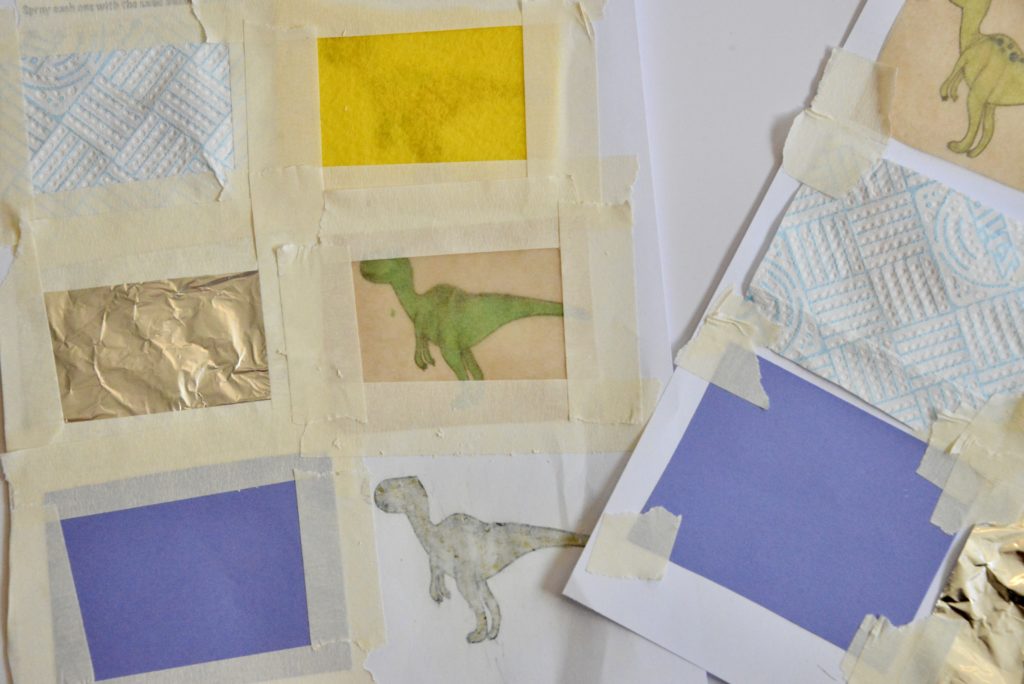
Spray each dinosaur with the same amount of water. 1 or 2 sprays should be plenty. If you don't have a sprayer just drop water instead.
Remember you should use the same amount of water each time.
Look carefully at the materials you've sprayed, check to see if the water is sitting on the top or has been absorbed by the material. If you can see the water on top, the material is waterproof.
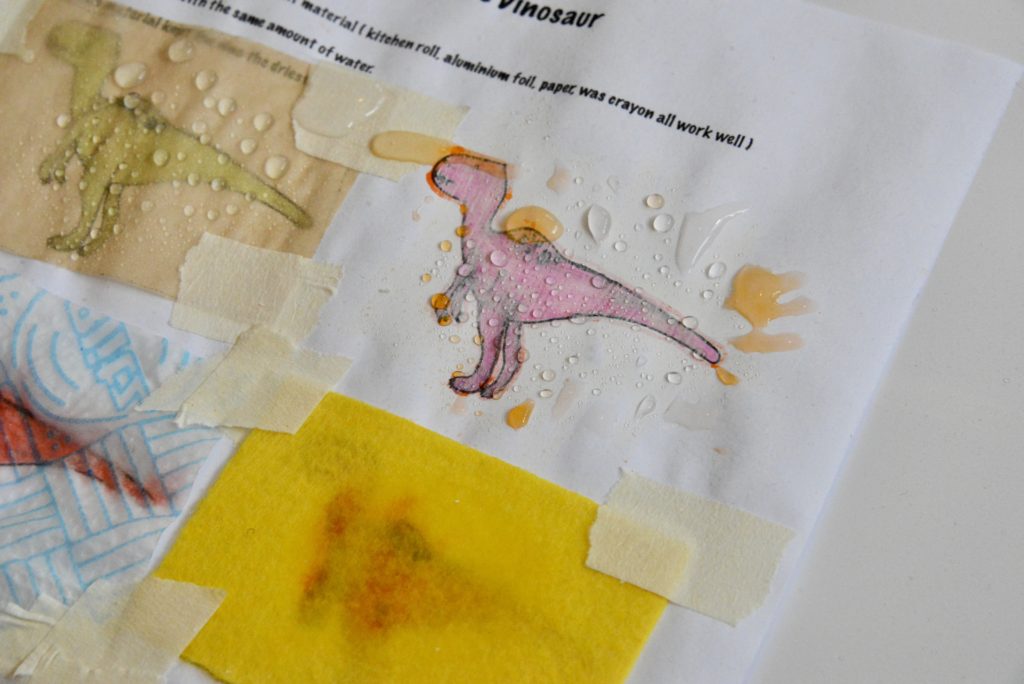
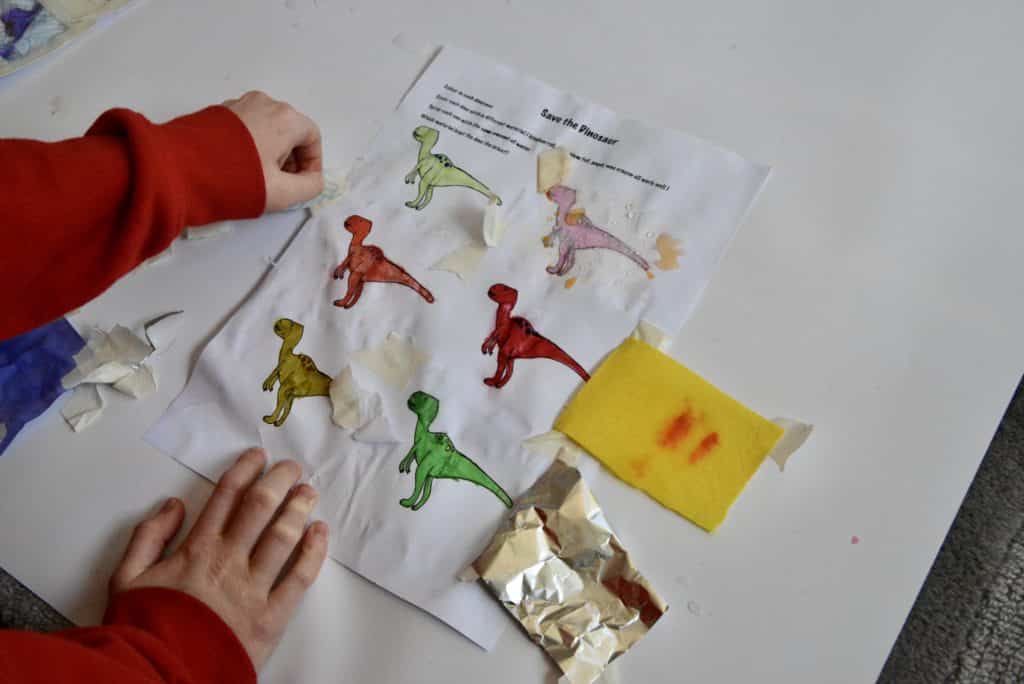
Results
White wax crayon, aluminium foil and parchment paper were the most waterproof.
We expected the foil and parchment paper to be waterproof as it is that feature that makes them handy for wrapping food.
We didn't expect the kitchen roll to be waterproof as its function is to absorb liquids, it is an absorbent material.
What is a material?
Materials are all the different types of stuff that makes up everything in the Universe. Rocks, trees, water, food, toys, people, animals, clothes and even planets are all made of materials.
All materials are made up of tiny ( so tiny you can't see them ) building blocks called atoms. Everything you touch and hold is made of atoms.
Very simply the word material just means what an object is made from. Examples of materials are plastic, metal, wood, cotton, paper etc.
Different materials have different properties, which make them useful for different things. For example, glass is used in windows because we can see through it ( it is transparent ). Bricks are used for houses as they are strong and gold doesn't rust so is handy for making jewellery.
Natural waterproof materials
Rubber and wax are examples of natural waterproof coatings. Leaves often have a waxy coating to protect the leaf and help it retain water.
Last Updated on April 30, 2020 by Emma Vanstone
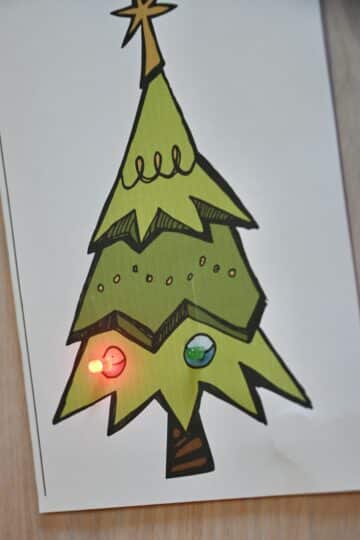
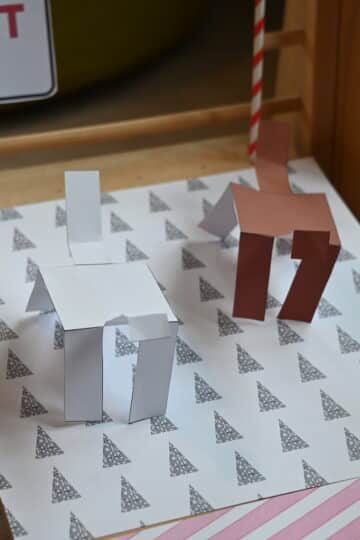


Shobha says
Great activity, Easy to execute and very effective. Thank you!